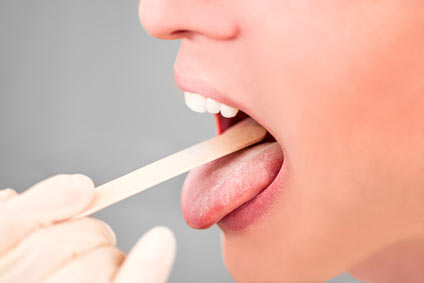The Anatomical Cause of Sleep Apnea
How to discover your the reason for having obstructive sleep apnea

Why do you have sleep apnea? Answering to this question can save your life.
Knowing the cause of sleep apnea is crucial for your life's quality. It will give you a better understanding of your sleep disorder and a more realistic expectation of your treatment option.
And I'll give you two examples:
- Some patients think: I'm not using CPAP machine, I'll just lose weight, and I will be fine.
If their apnea is caused by a high arched soft palate and a wide tongue, weight loss - although healthy - probably will not impact their sleep apnea.
- Some patients rush to surgeries for a sleep apnea to avoid using CPAP.
If the point of surgery does not correspond with your anatomical cause for sleep apnea, it may be an expensive and painful mistake.
Another thing to consider is that if you know the cause for sleep apnea, you can effectively use treatment options other than CPAP.
The point is that we should all learn why do we have sleep apnea.
Anatomical Risk Factors that Can Cause OSA
For most of patients with sleep apnea, the cause of the blocked airway is usually a combination of anatomical factors coupled together, resulting in cessation of breathing.
Over time and if left untreated, you can become high risk for heart attack and stroke.
In this video you will see the OSA Demonstrator, which is one of the best educational tools to illustrate your condition, and how the treatment can work in your favor:
 Demonstrating How Obstructive Sleep Apnea Appears
Demonstrating How Obstructive Sleep Apnea Appears
Here are just some examples of causes for sleep apnea from anatomical point of view:
- airway size
- enlarged tonsils or adenoids
- recessed lower jaw
- narrow jaw
- enlarged uvula
- wide, thick or long tongue
- deviated septum
- chronic nasal allergies
- elongated palate
- high arched palate
- excess airway tissue
- short thick neck
- obesity - if ones airway is already small, padding it with fat will further restrict the size of the airway making apnea worse.
Discovering Your Cause of Sleep Apnea
How can you predict if you can develop sleep apnea? Take a look in the mirror:
Observe your airway size:
- How small is your airway? is it the size of a nickel? a quarter? bigger?
- Then consider how large your tonsils are.
- Note the size of your uvula, does it hang down really low, is it unusually thick or wide?
Check the size of your tongue
- Look at your tongue - is it wide, thick, long?
- Do you see tooth impressions that run along the side of your tongue?
- When at rest, does your tongue fall down into the bottom cavity of your lower jaw ( it should)...or does it lay on top of your bottom row of molars?
How is your jaw?
- Do you have a recessed jaw? Does the bottom jaw set back further than the top? Maybe easier thought of as an overbite?
Checking your nose
- Close your left nostril and note how well you can breathe in and out of your right nostril. Now try the other side.
- Do you have a known deviated septum? Do you have chronic nasal allergies that cause congestion?
Chances are you have answered yes to two or three of these anatomical anomalies, and these would be the reason YOU have obstructive sleep apnea. Next time you see your sleep doctor, discuss this with him/her.
To Smoke or Not to Smoke
Smoking will also further restrict the airway because it causes inflammation. Smoking is a choice we make and doing so can possibly make apnea worse.
If you know the cause of sleep apnea (it will be different for each of us) then I believe it will give you a better understanding of your condition.
Some anatomical obstructions may be surgically removed or trimmed, but may not necessarily cure sleep apnea if there are multiple reasons for obstruction.
In conclusion:
If you are realistic with yourself and know the cause of sleep apnea, then you will know if CPAP is your best answer.
Any surgery is a risk, but some procedures may be helpful to you, even if they only make CPAP use easier and lessen CPAP pressures.
I hope now you understand why is so important to know the cause of sleep apnea. If you have swollen tonsils and want to remove them, that would probably increase your airway size.
However...if you also have a recessed jaw or an issue with your tongue, the tonsillectomy may not have much, if any, affect on your apnea condition.
You have to consider the whole picture.
Some more interesting pages for you to check out:
- Multiple Sleep Latency Test
- Obstructive sleep apnea in children
- Parasomnia, from simple movements in sleep to very complex behaviors







